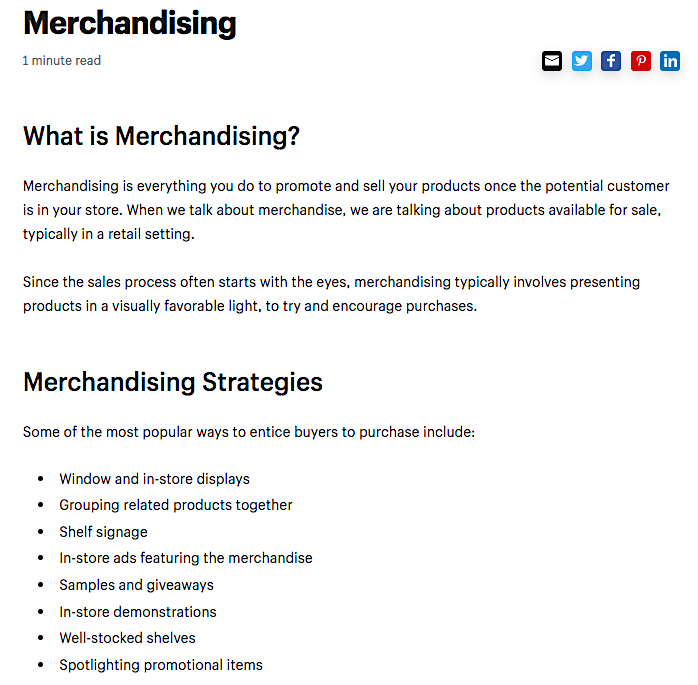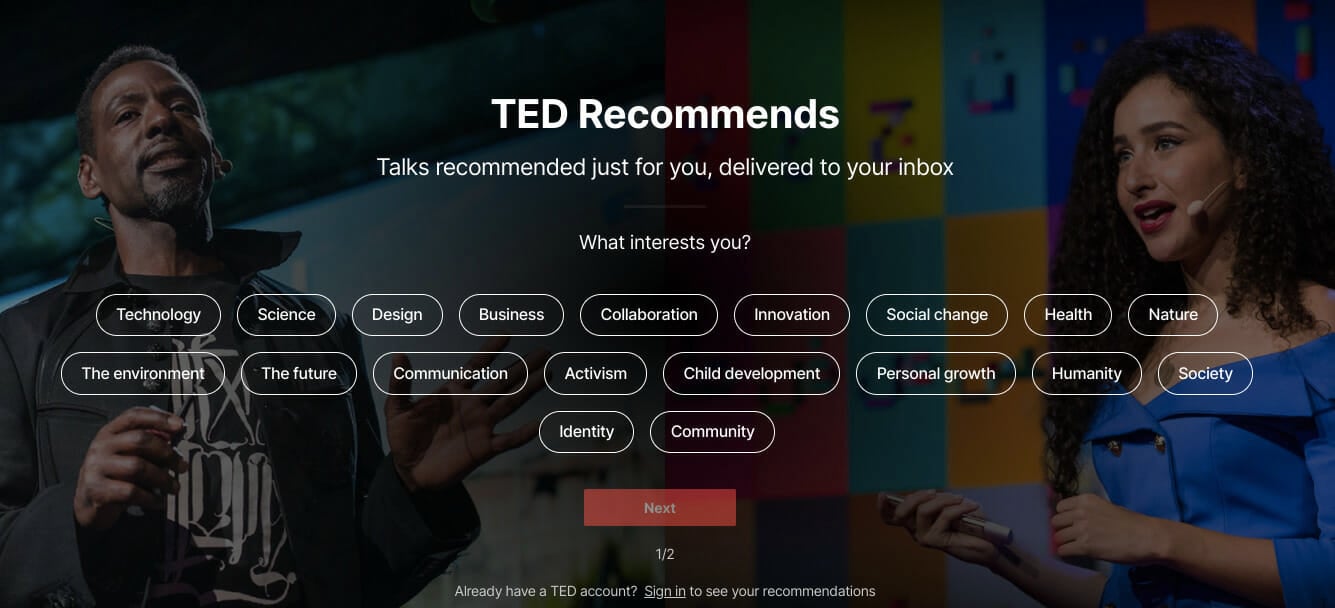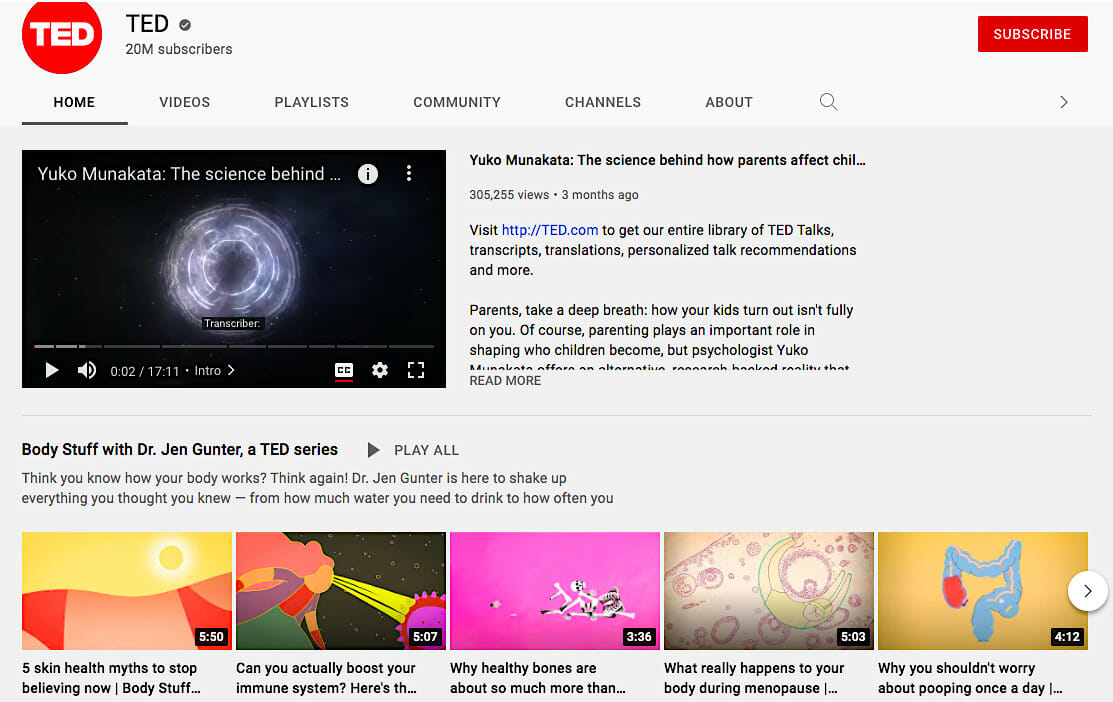Whether you’re brand new to content marketing or you’re a seasoned veteran, coming up with content marketing ideas is hard work.
It’s also not enough to come up with old and boring content ideas. Your content strategy needs to drive business results. In fact, the Content Marketing Institute’s definition of content marketing ends with “to drive profitable customer action.” That’s what we’re looking for.
The best way to keep a steady stream of effective content marketing ideas coming is to study other brands that have been successful at it.
That’s why we pulled together some of the best content marketing examples from brands around the world.
In this article, we’ll cover successful examples of content marketing campaigns that use (click on a link to jump to that section):
- Written content
- Video content
- User-generated content
- Social media content
- Lead magnets
- Case studies
- Multi-channel content
Read on to dive into the strategies they used, why they worked and how you can replicate their success.
Examples of Great Written Content Marketing
Since written content still contains a broad variety of content marketing strategies, we’ll break it down and give more specific content types that you can replicate, including:
- Original research
- ‘How-to’ solution-focused content
- ‘Hub-and-spoke’ authority content clusters
- A glossary
1) Orbit Media: Original Research
Orbit Media may be “just” a web design and development agency, but their content marketing is truly unparalleled. The website brings in over 50,000 visits per month in organic traffic alone:

Their success lies in the originality of their content.
While their guides are comprehensive and well written, they also do a lot of original research. For example, every year they send out a survey to 1,000 bloggers and then curate the data into statistics which are transformed into branded images, charts and more. Just that one post has over 7,000 backlinks!
In addition, their CMO, Andy Crestodina, is quick to catch on to trends and create new statistics around them. For instance, when the COVID-19 pandemic hit, he was one of the first to share original research around how it affected agencies:

Although some of these research projects can be expensive, not all of them are.
Crestodina once wanted to know the average lifespan of a website. The statistic didn’t exist at the time, so he hired a virtual assistant to go into the Wayback Machine, an Internet archive of more than 424 billion web pages saved over time. Within a few days, they found that the answer was: 2 years and 7 months.
When he published the article with this new statistic, it earned over 300 backlinks and only cost the company a few hundred dollars to hire the assistant.
Takeaway Tip: Invest in original research and consider having a spokesperson for your company. This can be as simple as calculating a statistic yourself or as complex as doing a collaboration with, say, a software company with complex data. You can also leverage collaboration as a double-edged sword by not only building relationships with the people that you work with directly, but also by leveraging their audience through speaking and podcast opportunities.
Related Content: 106 Quick and Fascinating Voice Search Statistics [Infographic]
2) Ahrefs: ‘How-to’ Content
Ahrefs is an all-in-one toolset for backlinks and SEO analysis.
This company stands out for investing heavily in educational content. They’ve created many detailed how-to guides that cover the pain points and challenges of their target market. How-to queries present a big opportunity for content marketers, and Ahrefs taps into that effectively.
Here’s an example: their How to Create a Winning Content Strategy article:

Ahrefs excel at showcasing their product as a solution for the challenge that people are searching for. In this case, if you’re trying to figure out how to create your content strategy, you’ll most likely need to do keyword research at some point.
Ahrefs uses this opportunity to seamlessly mention their Keywords Explorer feature:

It isn’t overly salesy, and it is a genuine solution to the reader’s exact needs. For another example from Ahrefs, check out their article on how to deal with negative SEO attacks.
Takeaway Tip: If you can write ‘how-to’ content and rank it in Google, you’ll have the opportunity to showcase your solution at exactly the time when your prospective customer needs it. Consider the key needs and challenges that you solve for customers, and conduct keyword research to find ‘how-to’ queries for your content marketing plans.
Related Content: How to Create a High-Performance Content Marketing Strategy in 2023
3) Hotjar: ‘Hub-and-Spoke’ Content Clusters
Hotjar makes heatmaps for websites. A heatmap tracks where on a web page users have visited and what they clicked on and moused over.
Even though Hotjar is a SaaS company, they have an incredible content marketing strategy that brings in over 294,000 visitors per month:

So why is this company so successful? For one, they created an amazing hub-and-spoke piece devoted entirely to heatmaps:

This piece ranks for just about every single keyword related to heatmaps, both broad and long-tail:

Comprehensively covering one topic, including examples, instructions, case studies and insights like this builds topical authority. If you demonstrate to Google that you’re an expert in the field of heatmaps, you’re likely to rank well for any heatmap-related search query.
Takeaway Tip: When you start building your content, start with a hub-and-spoke model to capture all the relevant keywords possible for your main term. For example, if you sell bookkeeping software, create a hub-and-spoke piece around “bookkeeping.”
Learn More: What’s the Right Content for Each Stage of the Marketing Funnel?
4) Shopify: An E-commerce Glossary
Creating a glossary or encyclopedia of terms within your niche can be a great way to establish expertise, create brand awareness, and drive top-of-funnel organic traffic.
Shopify’s Business Encyclopedia is a great example of this:

Each page contains a short definition in plain terms, with very brief additional details. For example, their merchandising definition page contains a quick definition, short bullet points on merchandising strategies, and the benefits of merchandising. No real depth though (you can see that it’s a 1-minute read), because that’s not what searchers are looking for at this stage.

Through creating high-quality definitions and a smooth user experience, Shopify has been able to rank for hundreds of highly competitive terms, even the broadest keywords in their niche such as ‘e-commerce’.
The encyclopedia drives an estimated 106,000 organic users per month, all of whom are interested in e-commerce topics and could be prospective Shopify customers:

Definitions are also effective for link building with content. Those who need to cite an authority resource to define an e-commerce term can use Shopify’s glossary (as you can see by the 14,000 backlinks their encyclopedia has earned so far).
Takeaway Tip: Think about some of the common jargon in your niche. Can you find a way to explain it in simple terms? Are there people searching for those keywords? Consider putting together a glossary of definitions, and adding internal links to further reading. You can capture prospects at this early stage of the funnel and push them towards learning about your product or service.
Learn More: What’s the Right Content for Each Stage of the Marketing Funnel?
Examples of Great Video Content Marketing
The popularity of video content marketing is stronger than ever before, and it clearly works. Almost all (99%) marketers who invested in video marketing in last year stated they would continue to do so in the future.
Let’s take a look at some great video content examples:
5) TED
TED is a platform for global conferences where authors, experts and other leaders give short talks about all sorts of thought-provoking ideas:

TED has had significant growth as a result of their amazing free content. Check out their YouTube page — they’ve got over 20 million subscribers:

Most of their videos have tens of millions of views, and that’s not even counting their TEDx, TED Fellows, TED-ed, and other channels:

The reason that TED does so well is that they’re committed to creating “ideas worth spreading.” So how did the TED



